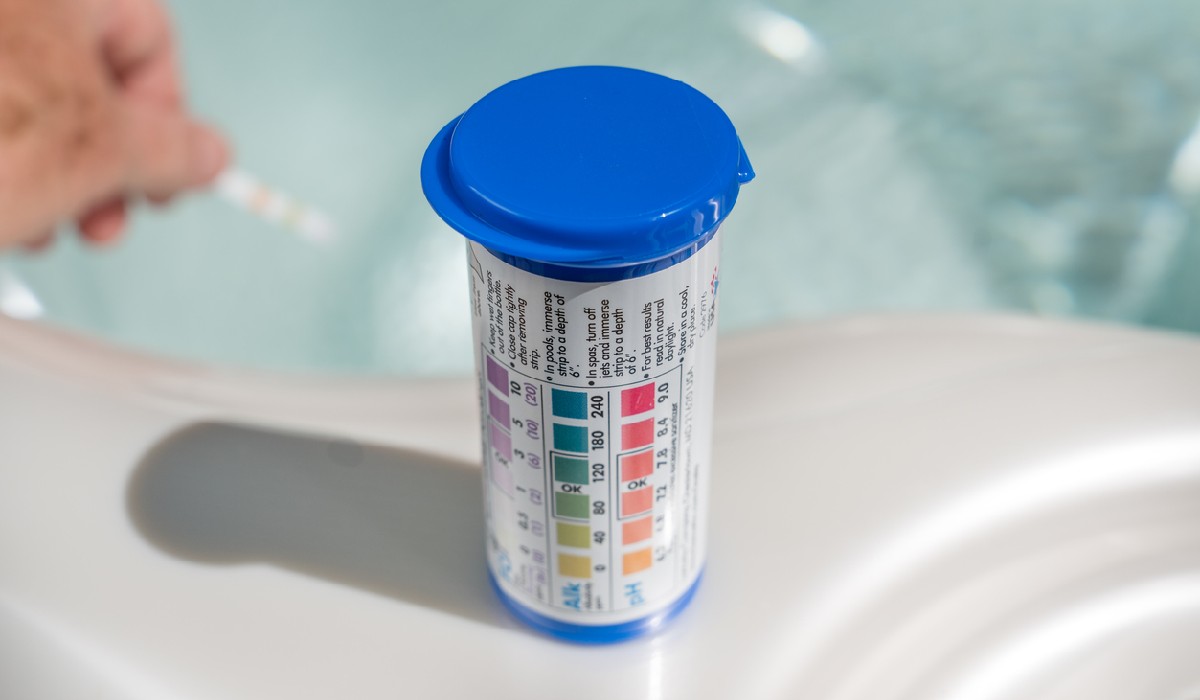This content was originally published on OldHouseOnline.com and has been republished here as part of a merger between our two businesses. All copy is presented here as it originally appeared there.

If you’re thinking of installing a hot tub in your backyard, you should become familiar with hot tub alkalinity. Alkalinity measures the ability of water to neutralize acids and bases, which is vital for maintaining a healthy pH level in your hot tub.
We will explain how alkalinity affects the water chemistry of your hot tub, the different methods for testing alkalinity, and the proper way to adjust the alkalinity if needed. We will also provide tips on how to maintain the balance of alkalinity in your hot tub and provide you with a list of the best pH and alkalinity tests on the market so you can get the best results for your hot tub. So whether you want to purchase a traditional hot tub or an inflatable hot tub, this article is for you.
What Is Hot Tub Alkalinity?
Alkalinity is a measure of the ability of water to resist changes in its pH level. It is an important aspect of water treatment because it allows for manipulating pH levels to create an optimal environment for pool-goers. In terms of hot tubs, alkalinity is responsible for helping to maintain a consistent pH level in the water, which keeps your spa clean and safe for users.
A consistent alkalinity level in your hot tub is essential for maintaining healthy pH levels. This helps to prevent corrosion and discoloration of the water due to high acidity. It can also create a health risk for users, for example, suppose the pH levels fluctuate by more than 1.0 over a short period. In that case, it can be uncomfortable and potentially dangerous by causing skin irritation or other adverse effects.
Optimal Hot Tub Alkalinity Range
Ideally, keeping the alkalinity levels in a traditional or inflatable hot tub between 80 and 120 ppm (parts per million) is best. Maintaining this range offers numerous benefits compared to higher or lower alkaline levels.
The most important benefit of keeping your hot tub’s alkalinity levels low is that it will help maintain a stable pH level within the water. Also, low alkalinity can reduce your maintenance costs due to fewer chemicals being needed for regular upkeep. Furthermore, it can reduce the risk of users experiencing skin irritation or other health consequences caused by high alkaline levels.
High alkaline levels in a hot tub can cause discoloration, corrosion of metal components, and even skin irritation. Additionally, it may require more frequent visits from a pool cleaning service to ensure that the pH levels remain balanced. This can increase maintenance costs significantly over time.
Tips and Techniques For Managing Hot Tub Alkalinity
Regularly testing your traditional or inflatable hot tub’s alkaline levels is key to keeping them within the optimal range. Various available kits provide accurate readings and make checking your alkaline levels straightforward. However, the most accurate way to test your hot tub’s alkaline level is with an electronic test kit, which, although more expensive than chemical kits, will give you more precise results in less time.
Once you have tested your traditional or inflatable hot tub’s alkaline level, you may need to adjust it if it is too high or too low. The best way to do this is by adding sodium bicarbonate (for low alkali) or sodium bisulfate (for high alkali). Before adding either chemical, wear gloves and appropriate clothing, as both can irritate if they come into contact with the skin or eyes. Also, be sure to follow the instructions on the package carefully and never exceed the recommended dosage stated by the manufacturer to avoid accidental overexposure or damage to the hot tub.
Potential Issues with Hot Tub Alkalinity
A high alkali level in a hot tub can cause corrosion of metal components such as pumps and valves due to excessive acidity in the water. To prevent this from happening, regular testing and maintenance should be performed to ensure that your hot tub’s pH levels are balanced and not too acidic or basic.
High alkali levels can also cause discoloration in your hot tub’s water due to its effect on metals such as copper or iron, which may be present in certain components used in manufacturing. So, again, regular testing and maintenance should be performed to ensure that these metals aren’t causing too much water discoloration.
Conclusion
In summary, alkalinity is important in keeping your hot tub clean and safe for users while preventing damage caused by incorrect pH or alkaline levels. Regularly testing your hot tub’s alkalinity is important to ensure it is within the optimal range of 80 to 120 ppm. If not, you may need to adjust it with either sodium bicarbonate or sodium bisulfate. Regular maintenance and testing will help ensure your hot tub remains free from corrosion and discoloration caused by excessive acidity or base chemicals. Maintaining proper hot tub alkalinity will help your hot tub last longer, remain clean, and provide a safe and enjoyable environment for you and your family.





